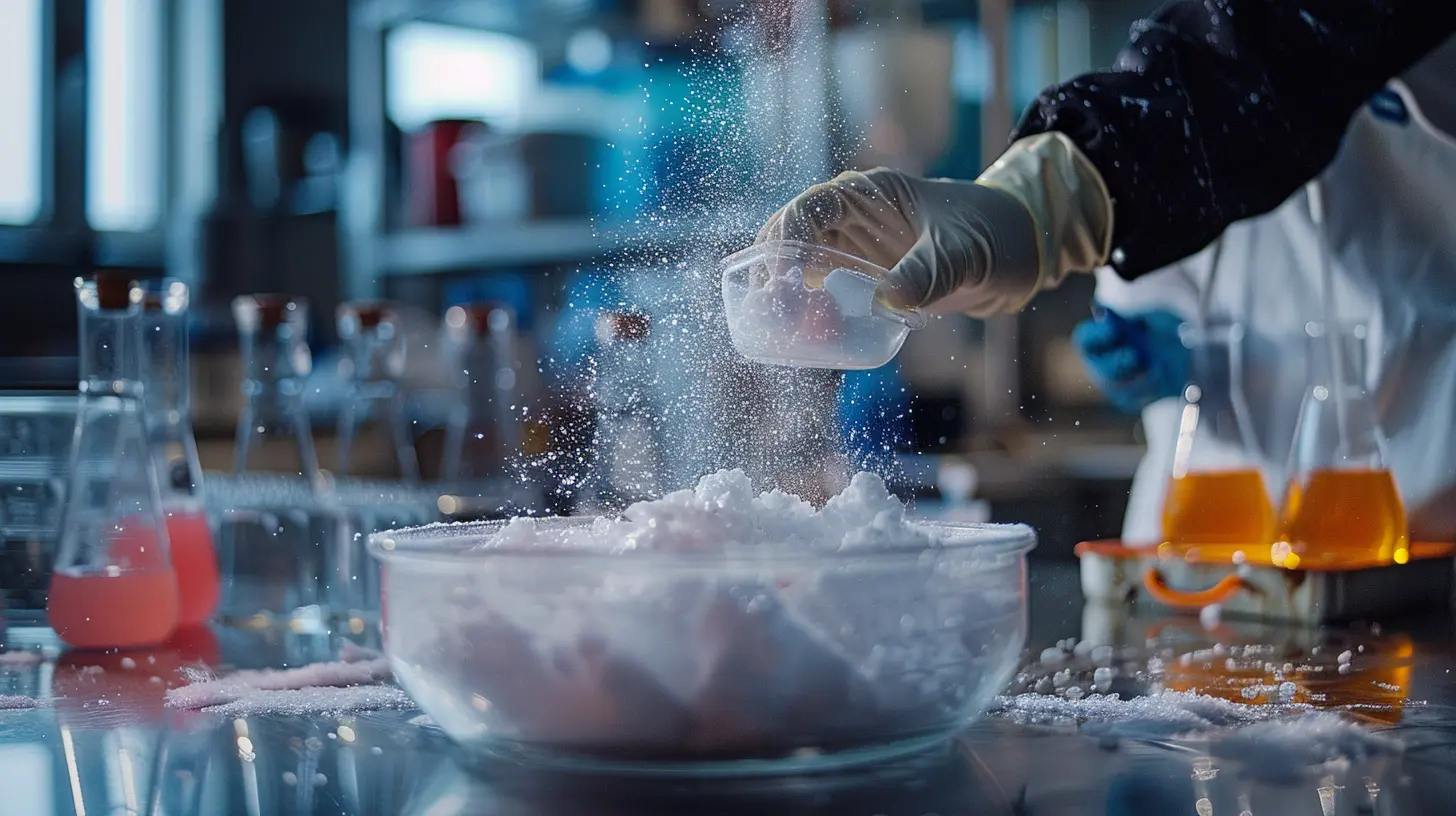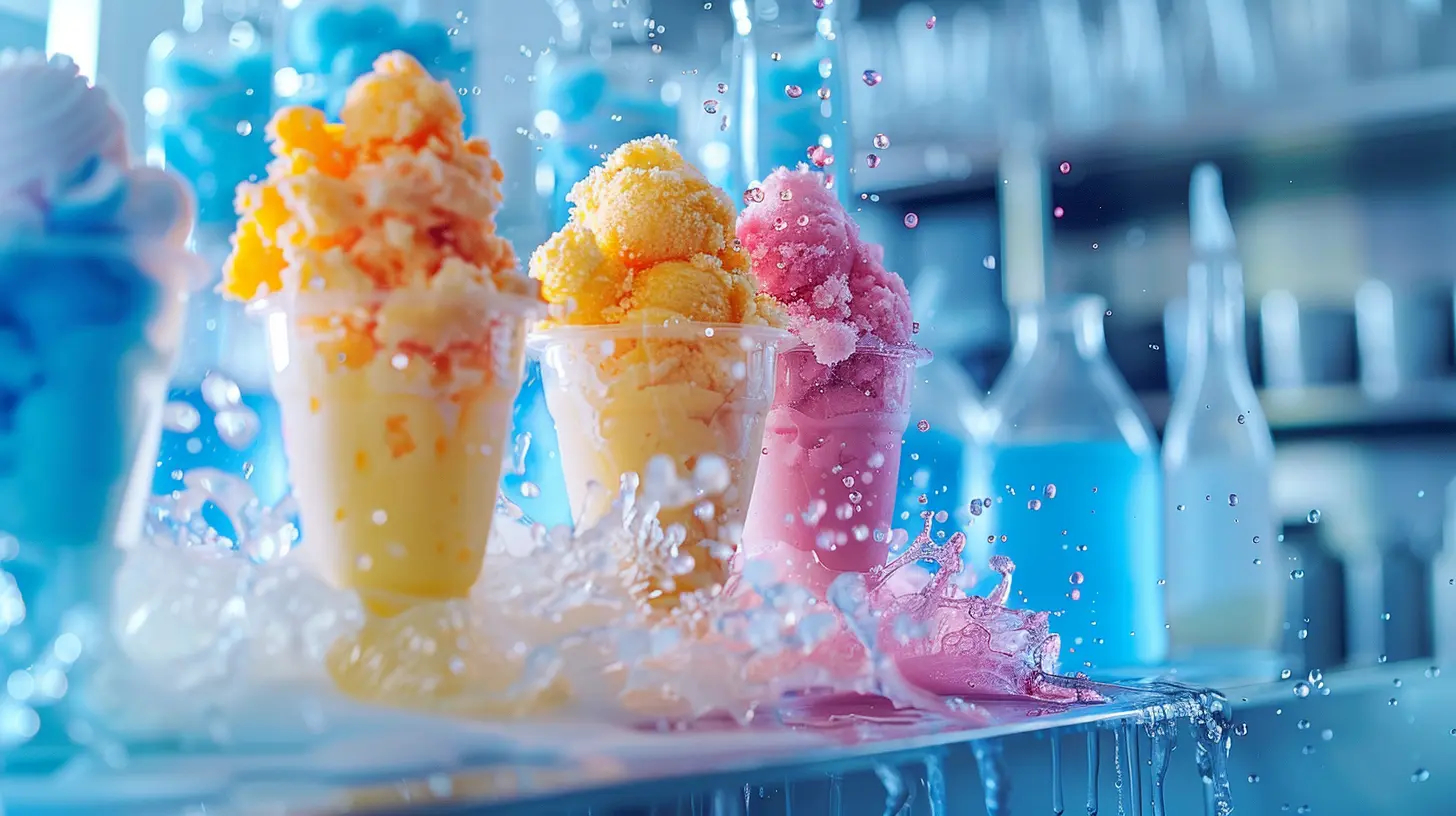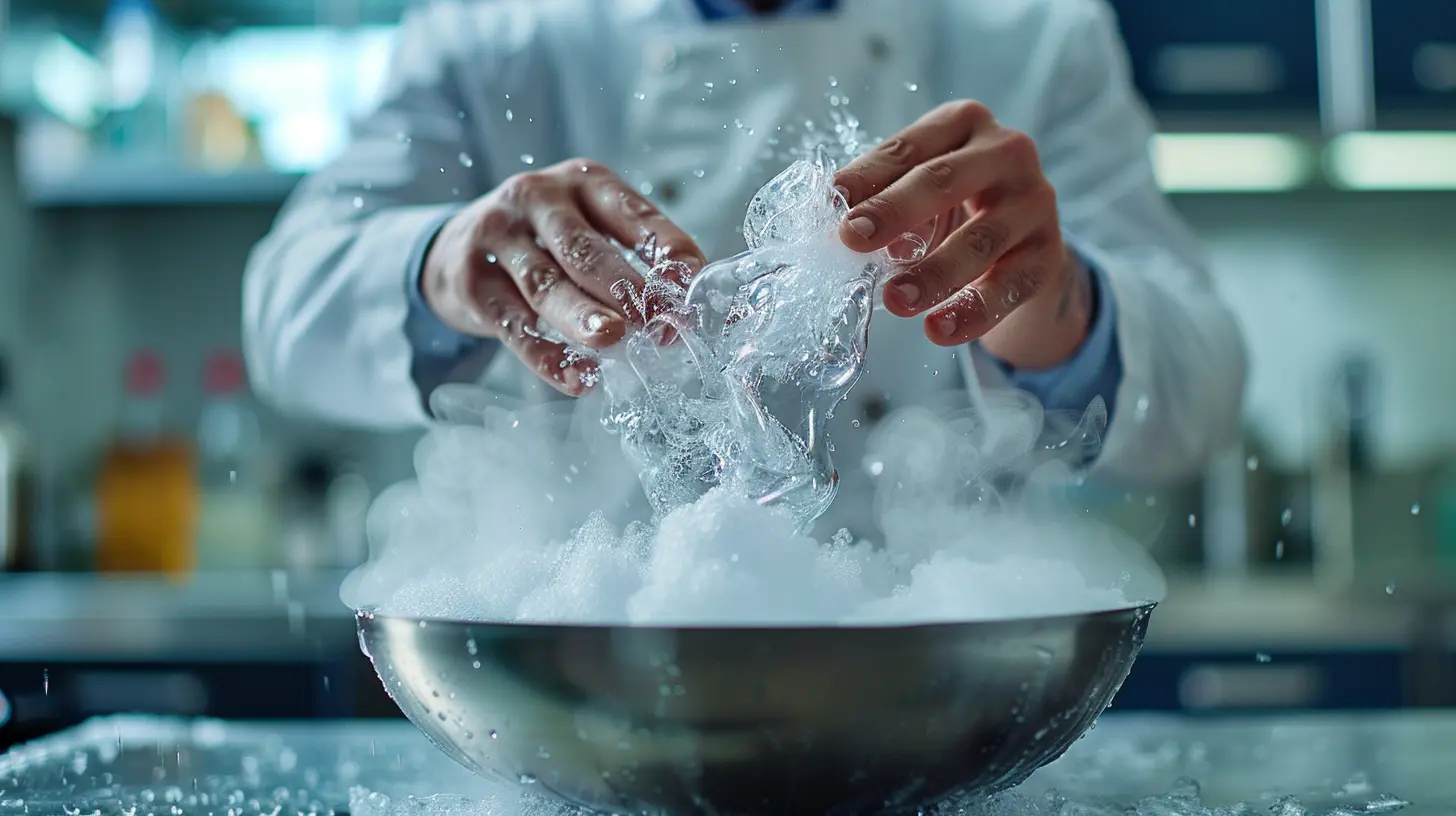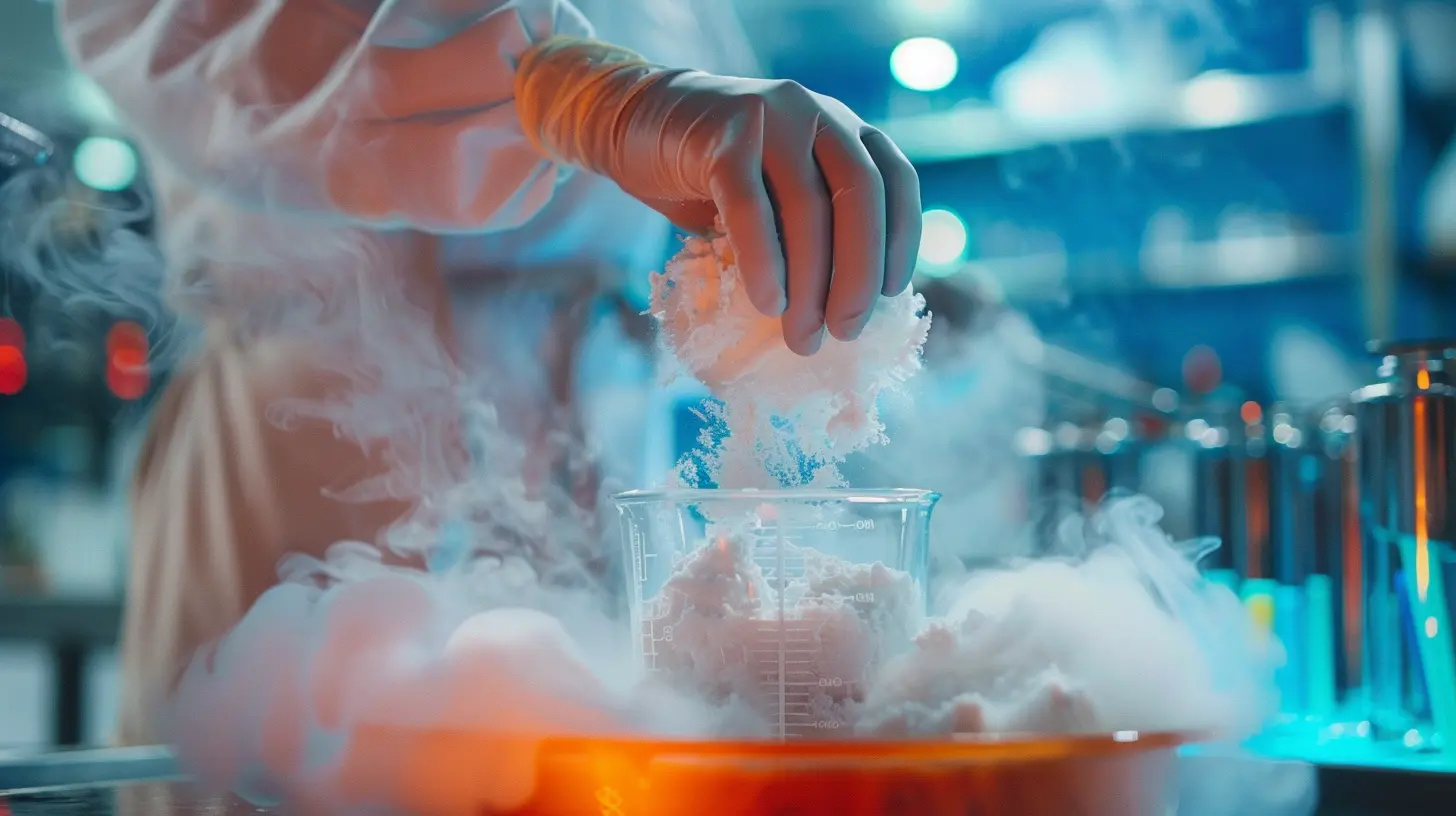The Science Behind Ice Cream: Exploring Freezing Points and Mixtures
13 June 2025
Who doesn’t love a scoop (or three) of ice cream on a hot summer day? It’s creamy, sweet, and the ultimate cool-down treat. But have you ever stopped mid-bite and thought, “How exactly does this frozen delight come to be?” There’s more to ice cream than meets the taste buds. Underneath that delicious swirl lies a fascinating blend of chemistry and physics.
In this article, we’re going to break down the science behind ice cream—specifically, what freezing points have to do with it, how mixtures are involved, and why making the perfect batch is a delicate balancing act. So grab a spoon and let’s scoop into the icy world of science!
What Makes Ice Cream… Well, Ice Cream?
At first glance, ice cream might seem like just another frozen dessert. But scientifically, it's a complex mixture of air, water, fat, sugar, and proteins. Each one plays a crucial role in texture, flavor, and that lovely mouthfeel we all crave.Let’s simplify this: ice cream is basically a frozen emulsion—a stable mix of fats and water-based ingredients that wouldn’t normally blend together. Fats (mainly from milk or cream) don’t naturally mix with water, but with a little help from emulsifiers and proteins, they behave nicely. It’s this combination that creates a smooth, creamy consistency rather than an icy, granular one.
The Role of Freezing Points: Why It's Not Just "Frozen Milk"
Here’s where it gets interesting.Water Freezes at 0°C (32°F)… But Ice Cream Doesn’t
That’s right! You might assume ice cream freezes at the same temperature as water, but you'd be way off. Ice cream actually freezes at a much lower temperature—around -3°C to -6°C (26°F to 21°F), sometimes even colder. Why? The answer lies in one word: solutes.Solutes are substances like sugar and salt that dissolve in a liquid. Adding them to water lowers its freezing point—a phenomenon known as "freezing point depression." This is crucial in ice cream making. Too high of a freezing point and you get a soggy, slushy mess. Too low, and it’s hard as a rock.
Why Sugar is So Important
Sugar isn’t just about sweetness—it’s a freezing point manipulator! It keeps ice cream soft enough to scoop. So, the next time someone says your dessert is "too sweet," you can tell them it's all part of the science. Without sugar, you’d need a jackhammer to scoop it!
Let's Talk Mixtures: Emulsions and Suspensions
Ice cream is a beautiful dance of different types of mixtures. If you're scratching your head, don't worry—I’ve got you.Emulsions: Oil and Water, Best Friends Forever?
An emulsion is when tiny droplets of fat (from milk and cream) are dispersed in water. Normally, fat and water don't mix (think of oil floating on top of soup), but with the help of emulsifiers like egg yolks or lecithin, they stay happily blended.In ice cream, this emulsion creates that rich, velvety structure. Without it, you'd just have icy milk—not exactly what you’d want in a waffle cone.
Suspensions and Colloids
Another part of the magic? Suspensions and colloids. Milk proteins and tiny ice crystals remain suspended in the mixture, giving structure and creaminess. These particles are small—but mighty. They influence everything from taste to how long your cone lasts in the sun.
The Freezing Process: Timing is Everything
Let’s walk through what actually happens when ice cream freezes.First, the mixture is churned while being cooled. This churning has a few jobs:
- It incorporates air (making the ice cream light and fluffy)
- Prevents large ice crystals from forming (bye-bye iciness)
- Keeps fat globules well-dispersed
This phase is known as "dynamic freezing." The temperature slowly drops while the mixture is agitated. The goal? To form thousands of tiny ice crystals rather than a few big ones. Big crystals = icy texture = sadness. Tiny crystals = smooth texture = happiness.
Once it reaches the desired consistency, it goes into a deep freezer or blast freezer—a phase called "static freezing." This locks everything in place.
Air: The Invisible Ingredient
Air? You bet. Ever noticed how some ice creams feel denser than others? That’s all about how much air gets whipped in—a process called "overrun."Commercial ice creams can have up to 100% overrun, meaning the volume doubles with air. Premium ice creams? Closer to 20–40%. Less air means richer, denser, and often more expensive ice cream.
Think of it like beating egg whites. The more air you add, the fluffier it gets. But too much and you lose the richness. Ice cream works the same way.
The Impact of Ingredients on Texture and Taste
Fat: The Flavor Carrier
Fat doesn’t just make things creamy—it actually carries flavor more effectively than water. That’s why low-fat ice creams often taste a bit off or "watery." Fat binds to aroma compounds and enhances them. So, yes, fat is your flavor friend.Sugar Types: Not All Created Equal
Did you know different sugars affect texture differently?- Sucrose (table sugar) is the classic choice
- Glucose and corn syrup can add smoothness
- Lactose (milk sugar) can lead to grittiness if there’s too much
By using a mix, ice cream makers control not just the sweetness but how soft or hard the final product is.
Stabilizers: Ice Cream’s Secret Helpers
Stabilizers like guar gum, carrageenan, or xanthan gum keep everything, well, stable. They prevent melting, reduce iciness, and keep your pint creamy even after storing it for weeks.They’re like the unsung heroes—working behind the scenes so your cone doesn’t turn into a puddle too quickly.
The Magic of Salt in Freezing
Ever made ice cream the old-school way—shaking a bag or cranking a hand churn? Then you’ve seen salt in action.Here’s the scoop: adding salt to ice around the ice cream container lowers the freezing point of the ice, allowing the mixture inside to freeze without turning rock hard instantly.
This is the same principle that keeps roads from icing over in winter. Science is useful AND delicious.
Homemade Ice Cream: A Mini Science Lab
Making ice cream at home is the perfect way to see science in action. You get to control every variable—ingredients, temperature, mixing time. Plus, you can experiment with flavors and textures just like a food scientist.Want smoother ice cream? Try adding a bit of corn syrup. Looking for something richer? Use more cream and less milk. It's all about balance.
Here’s a simple challenge: make two batches—one with full-fat cream and one with low-fat milk. You'll feel the difference immediately, and your taste buds will confirm it.
Common Freezing Fails (And the Science Behind Them)
Let’s be real—ice cream making isn’t always smooth sailing. Here are a few common flops and what’s happening beneath the surface:- Icy Texture: Large ice crystals formed due to slow freezing or not enough sugar/fat.
- Too Hard: Not enough sugar or fat, or frozen too slowly.
- Grainy Feel: Ice crystals re-formed after refreezing, or lactose crystallization.
- Melts Too Fast: Not enough stabilizers or overrun.
Understanding the science helps you troubleshoot like a pro.
The Future of Ice Cream: Science Meets Innovation
Food scientists aren’t just stopping at vanilla vs. chocolate. Brands are now exploring low-sugar, dairy-free, and protein-packed versions that still taste amazing. Some even use liquid nitrogen for instant freezing, creating super-smooth textures.And guess what? They all rely on manipulating freezing points and mixtures. Whether it’s oat milk, coconut cream, or pea protein ice cream—science is still the secret ingredient.
Final Thoughts: Ice Cream is Cool—Literally and Scientifically
So the next time you dig into a sundae, remember you’re not just enjoying a treat—you’re indulging in a scientific masterpiece. The precise dance of freezing point depression, emulsification, and crystal formation makes every scoop an edible experiment.It’s creamy chemistry at its best. Delicious physics in a cone. And honestly, what better way is there to enjoy science than with a chocolate drizzle on top?
Now go ahead—grab that freezer bowl and start mixing up a little science of your own.
all images in this post were generated using AI tools
Category:
Science ExperimentsAuthor:

Bethany Hudson
Discussion
rate this article
3 comments
Paxton Henderson
Who knew ice cream required so much science?
June 21, 2025 at 2:23 AM

Bethany Hudson
Absolutely! Ice cream is a perfect blend of chemistry and creativity, making it both delicious and scientifically fascinating.
Alexa Edwards
Delightful synergy of science!
June 14, 2025 at 4:51 AM

Bethany Hudson
Thank you! I'm glad you enjoyed the exploration of how science enhances our favorite treats!
Ardyn Harmon
Who knew ice cream had a PhD in science? Next time I indulge, I’ll think about the freezing points instead of the triple scoop I just devoured! 🍦😄
June 13, 2025 at 11:38 AM

Bethany Hudson
Thanks for the fun comment! It's amazing how science enhances our treats—enjoy that triple scoop! 🍦😊



